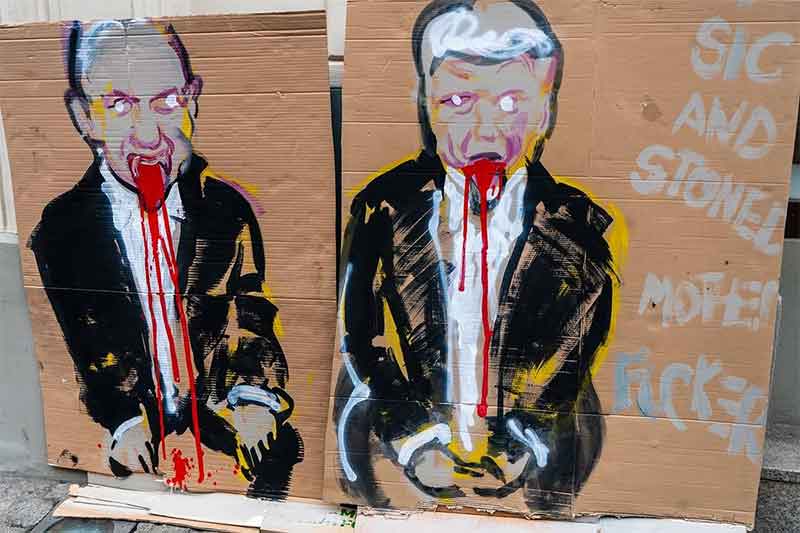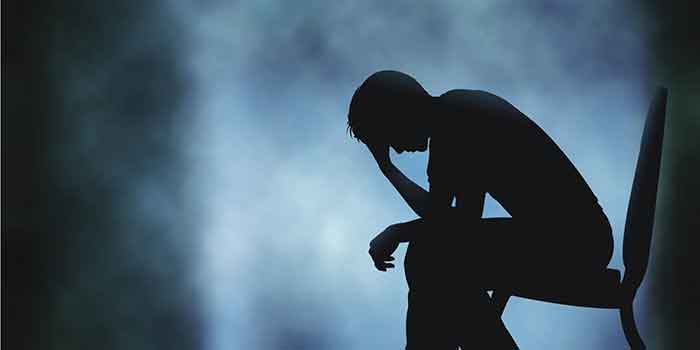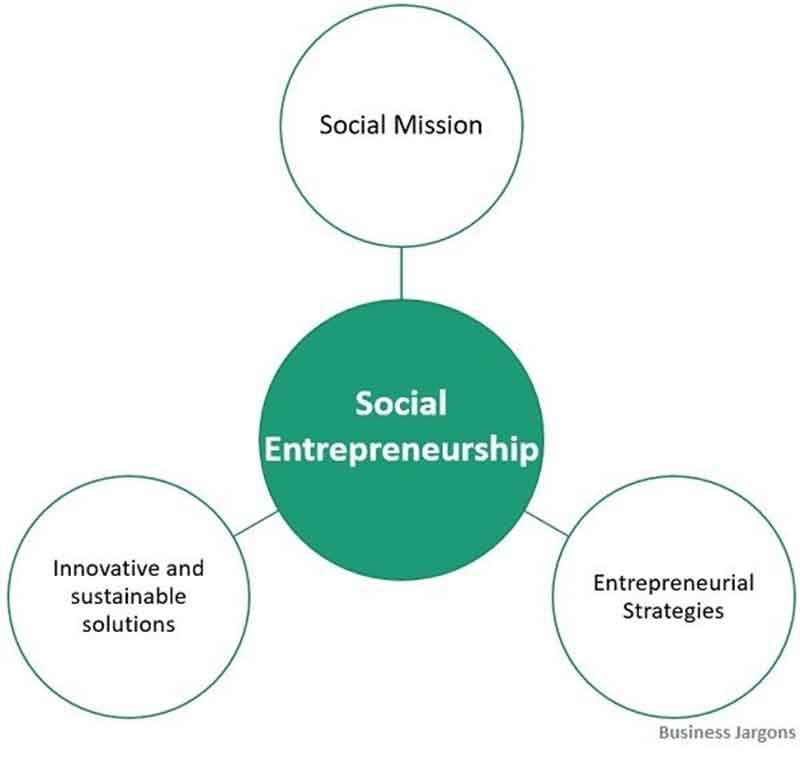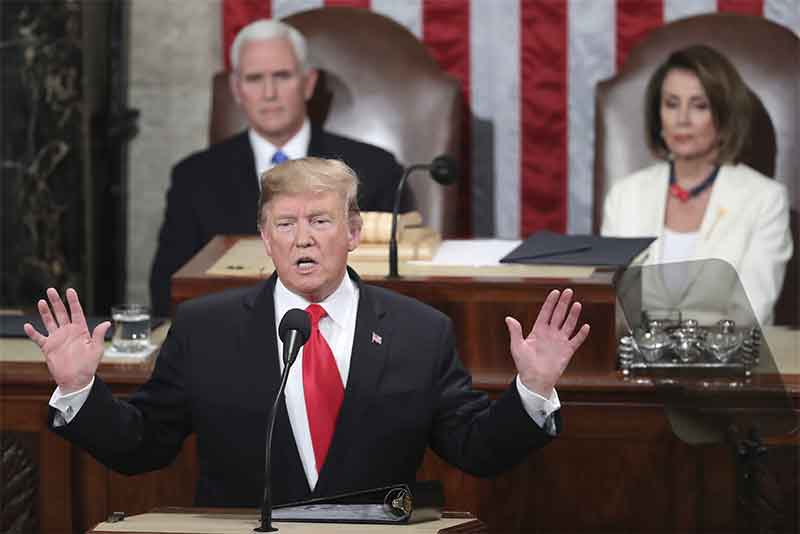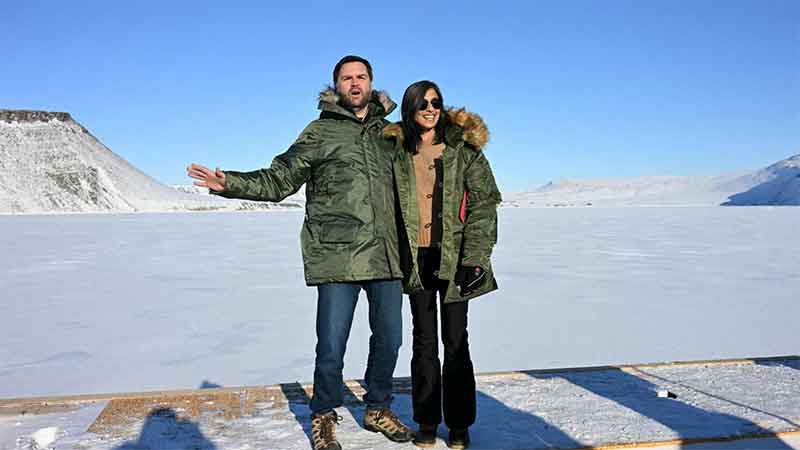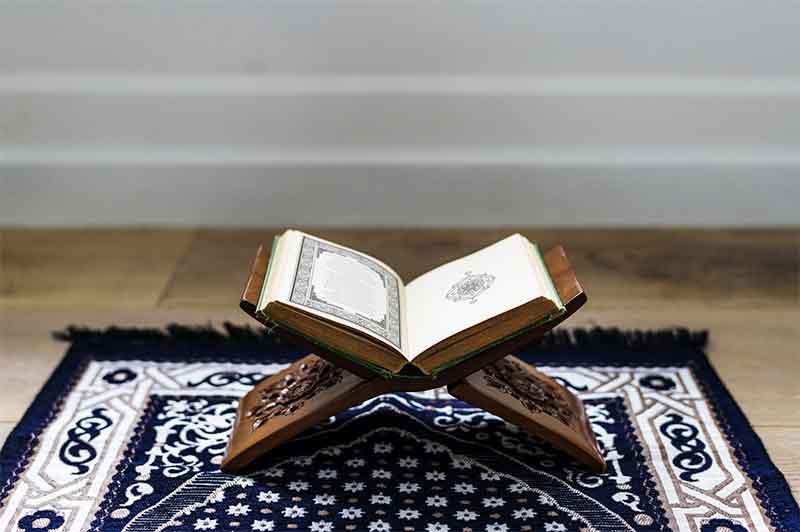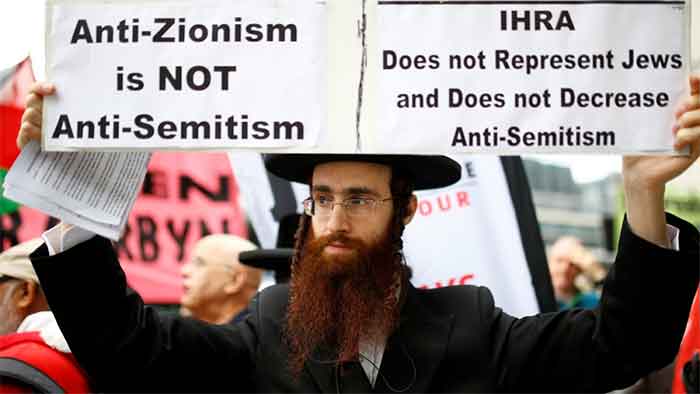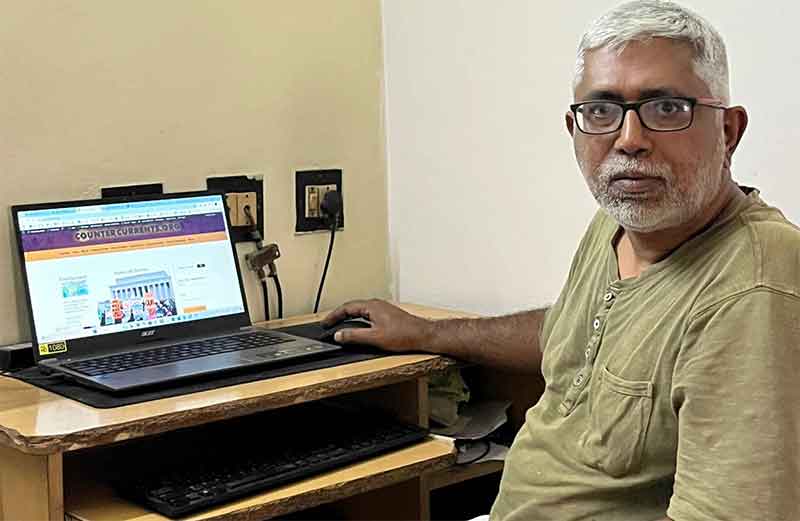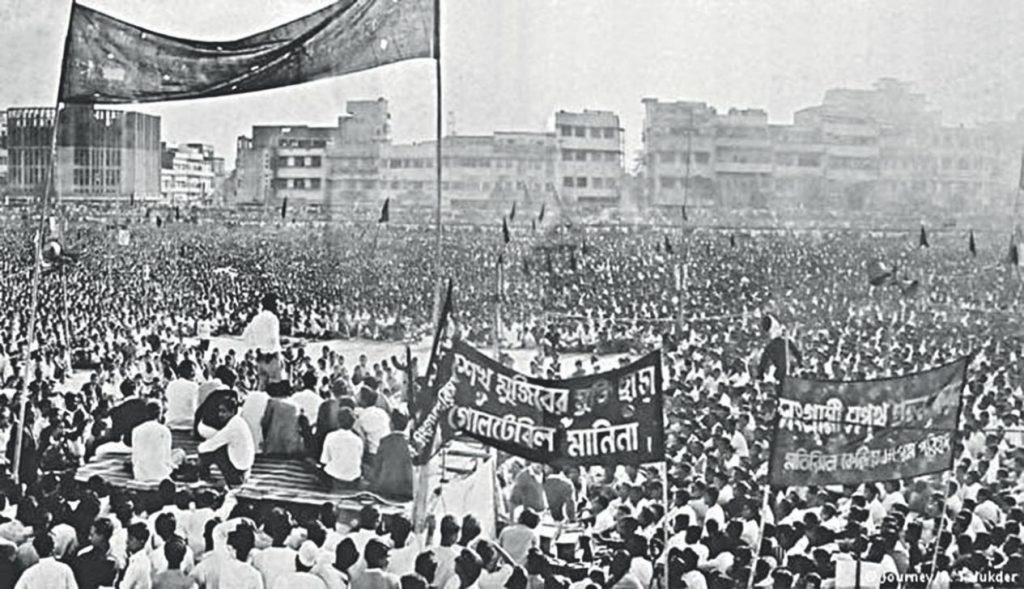
This is my eyewitness account of events, which took place in erstwhile East Pakistan, exactly 51 years back in January-February 1969. Although not fully comparable with what 1789 signifies for France, yet 1969 signalled the beginning of some revolutionary changes in the history of Pakistan. It witnessed the end of Ayub Khan’s decade of “guided democracy”, and the end of Pakistani hegemony in its eastern wing eventuating the birth of Bangladesh. In a way, 1969 was the “best of times” and the “spring of hope” for what is Bangladesh today. In hindsight, as a student of history and as an active participant in the movementfor justice and freedom from an unaccountable government, it appears that both the ruler and the ruled read the writings on the wall of history.
While the former yielded, and abdicated eventually; the latter became more self-confident, and became independent, eventually.In 1969, East Pakistan prepares itself for its Bastille Day! As Ten Days shook Russia for ever in November 1917, so did the 37 Days between 17th January and 22nd February of 1969 shook the foundation of Pakistan forever! Had there been no 1969, there would not have been any “1971” in the history of Pakistan and Bangladesh.
However, until the end of 1968, while Ayub Khan was celebrating his Decade of Development – rightly or wrongly – there was no sign of any crack in the edifice of his power, glory, and achievements. Meanwhile, Sheikh Mujibur Rahman and his 34 co-accused in the Agartala Conspiracy Case had been languishing in Pakistani military custody, facing a special tribunal and an uncertain future for their “conspiracy” or plan to carve East Pakistan out of Pakistan, as Bangladesh. In other words, they were virtually waiting for the thumbs down by Justice S.A. Rahman (Head of the Tribunal) to take them to the gallows.
In 1969 I was a third-year honours student at Dhaka University. As an active participant and eyewitness to the Great Mass Movement of 1969, I simply cannot believe exactly 51 years after our first encounter with East Pakistani police and EPR (East Pakistan Rifles or the border security guards) troops in front of the Dhaka University Arts Building on 17th and 18thJanuary 1969that, that would eventually change the political geography of South Asia with the bifurcation of Pakistan by the emergence of Bangladesh.
The Movement was a catalyst, which forced the Pakistani military government of Yahya Khan to buy time, from the 25th March 1969 to 16th December 1971, to abdicate power without being seen as “too eager and willing” to do so to its own people in West Pakistan. Meanwhile, East Bengalis were in a mood of doing daredevil surfing in the most turbulent ocean of destiny under the leadership of Sheikh Muibur Rahman, Maulana Bhashani, and other brave people of erstwhile East Pakistan. This is how I see the turbulent and eventful years between 1969 and 1971.
As mentioned above, the germination of the 1969 Movement was very humble. It germinated in the dormitories of Dhaka University – especially, in the erstwhile Iqbal Hall and Jinnah Hall. Although its beginning was dramatic and humble, its culmination was sky high, which eventually paved the road toward Bangladesh. Unfortunately, neither historians nor Bangladeshi civil society, let alone politicians – who love to usurp the collectiveglory, endeavour, and sacrifices of people from various walks of life as exclusive to their own doing – have highlighted the glorious role of students, working class people, intellectuals, and others who selflessly organized, participated, and some paid the highest price for the success of the 1969 Movement, which prepared the nation for the ultimate showdown in 1971. Not ONE leader or party was behind the grand success of the 1969 Movement, let alone the Liberation of 1971.
Like all major uprisings and revolutions in history, the 1969 Movement just did not come from nowhere. Ayub Khan’s imprudent foreign policy, especially his insane decision to send armed intruders into Indian Occupied Kashmir to liberate it from Indian occupation to remain in power unto death which dragged India into a full-fledged war in 1965, may be mentioned in this regard. He not only had to swallow the bitter pill, signing the not-so-dignified peace treaty with India at Tashkent in January 1966, but his waging a war against India by neglecting the defence of East Pakistan (which was at the mercy of India during the September War) also gave momentum to the already brewing separatist sentiment in East Bengal. By early 1966, the fall out of the 1965 War for Islamabad was the bombshell, the not-so-innocuous Six-Point Programme of the Awami League submitted by Sheikh Mujibur Rahman at the All-Party Convention in Lahore.
Thanks to Ayub Khan’s loud and imprudent braggadocio that projected his ten-year old dictatorship in 1968 as the Decade of Reforms and Development, Pakistanis in both the wings seemingly became conscious of and resolute about removing him from power for the sake of democracy and freedom. Ayub Khan’s “development before democracy” – as some Bangladeshis think today to be the best way of becoming developed and prosperous – simply backfired. Meanwhile, his former Foreign Minister Zulfikar Ali Bhutto – who had resigned soon after the signing of the Tashkent Declaration as he considered it a sell-off of national interests by Ayub Khan – started a vitriolic campaign against his former boss. His colourful demagogy, along with his mercurial and unpredictable political manoeuvring,simply outwitted Ayub Khan. Sudden substantial rise in the price of sugar on the eve of the Shab-e-Barat (an Islamic festival when Muslims share homemade sweets among friends, neighbours, and the poor in South Asia) in late 1968 was the last straw on the camel’s back! The public protests against the sugar crisis – ordinary people and housewives came out on street –soon turned into the crisis of survival for the Ayub Regime. On 25th March 1969, Ayub was forced to resign and hand over power to the Army Chief, General Yahya Khan. What followed the first round of the debacle for Pakistan in March 1969 was the subsequent, humiliating and inevitable defeat of the Pakistani armed forces at the hands of Indian and Bangladeshi armed forces in December 1971.
Now, I am going to briefly discuss what followed the massive anti-Ayub demonstrations in West Pakistan during October 1968 and mid-January 1969, especially in East Pakistan. Pakistani opposition leaders from both the wings formed an opposition bloc to overthrow the Ayub Regime and restore democracy in Pakistan. The bloc, Pakistan Democratic Movement (PDM) under the joint-leadership of Nurul Amin (Council Muslim League), Nawabzada Nasrullah Khan (Awami League – N), Maulana Maududi (Jamaat-e-Islami),Khan Abdul Wali Khan (National Awami Party-W), Hamidul Huq Chowdhury (Pakistan National Democratic Front-NDF), Sheikh Mujibur Rahman (Awami League -M),Maulvi Farid Ahmad (Nizam-e-Islam Party) and othersactively worked for the restoration of democracy in the country. On 8th January major opposition parties, barring Bhutto’s Pakistan People’s Party (PPP) and Bhashani’s National Awami Party (NAP)of Maulana Bhashani, formed the Democratic Action Committee (DAC) for the overthrow of the Ayub Regime. On 17 January 1969, the DAC organized a protest rally in Dhaka against Ayub Khan, and demanded the restoration of democracy in Pakistan. However, excepting the PPP of Bhutto in West Pakistan, the AL of Mujib, and NAP of Bhashani in East Pakistan, all these combined opposition parties failed to mobilise mass support against Ayub Khan. Although Mujib’s Awami League was in both the PDM and DAC alliances, the Party was much more effective in drawing mass support in East Pakistan because it espoused the most popular (among East Bengalis) Six-Pont Programme, which demanded complete autonomy (if not independence) for East Pakistan, with no ambiguity.
Meanwhile, in October 1968, the East Pakistan Student League (EPSL) and both the Menon and Motia groups of the East Pakistan Student Union (EPSU) formed a political alliance. And, on 4th January 1969, these three student organisations jointly formed the Sharbadolio Chhatra Sangram Parishad (All-Party Student Action Committee), and put forwardthe famous Eleven-Pointcharter of demands, which partially included the Six-Points and numerous short- and long-term socio-economic, and political programmes for the state of Pakistan, including democracy, nationalization of industries, banks, and big businesses. In the backdrop of the collective failure of the PDM,PDF, and DAC to organize a mass movement against the Ayub Regime, along with the PPP and its student wing (the Leftist NSF, having no links with the NSF in East Pakistan) in West Pakistan, the Awami League (M) and NAP (B), andthe Student-Action Committeein East Pakistan played the most important role in overthrowing the Ayub Regime. My eyewitness account of the 1969 Movement is exclusively about what happened in East Pakistan, during the 37 turbulent days between 17th January and 22nd February of that eventful year.
Although the DAC, Awami League, NAP (Bhashani) and NAP (Muzaffar) started organizing rallies and processions in Dhaka and some major towns in East Pakistan in early January, their efforts did not draw mass support until the Student Action Committee took the leadin organizing rallies and processions. But this did not happen until 20th January. I vividly remember the day – 16th January – then Dhaka University Central Student Union (DUCSU) General Secretary Nazim Kamran Chowdhury went to the office of DUCSU VP Tofael Ahmed’s room (in the ground floor of the Arts Building) along with a few of us and asked Tofael Ahmed if he would be organising a movement demanding the withdrawal of the Agartala Conspiracy Case, and the release of the 35 detainees, including Sheikh Mujibur Rahman. To our dismay and utter surprise Tofael Ahmed told him: “Tomar ki matha kharap Kamran, Agartala ekta rashtrodrohi mamla? Er biruddhe andolon kora jay na!” (“Are you insane Kamran, Agartala is an anti-state conspiracy case? We simply can’t go against it!” The way Kamran Chowdhury rebutted Tofael Ahmed in loud, firm, and inambiguous terms still reverberates in my ear! He told Tofael Ahmed: “Tomra … phalaoga, amra kal rastay namtesi, dekhi ke amgo badha dey!” (“You people do whatever you want to, we will be on the street tomorrow and see who stops us from doing so!”). And the rest is history!
Kamran Chowdhury was true to his word. On Friday 17th January, he along with around 100NSF boys from Jinnah and Mohsin Halls (those who belonged to the pro-Government student organisation, the National Students Federation, which by then had been split into two, pro- and anti-Ayub groups) started throwing brickbats at a large contingent of police force (who wore helmets, carried long sticks, and some carried rifles with bayonets on). The “battle” started around 10 AM and continued for a couple of hours, with no decisive victory or defeat for any side! It is noteworthy that NO other student groups (in the Left or Right) but only around 100 NSF boys fought the police and sustained injuries on the Day One of the showdown, on 17th January.
Come day two, 18th January! Our (since I was an active participant) number swelled and we had around four to five hundred determined and very brave Dhaka University students with us. The Menon Group of the Student Union was with us. Not a single pro-Awami League Student League boys were with us on the 18th. I still remember late Abdur Rauf, who was then the President of the pro-Awami League Student League, standing and watching us fight the police from a safe distance near the main entrance of Jinnah Hall (Surjya Sen Hall since 1971). No top Student League leaders, let alone Tofael Ahmed (who later emerged as the “hero” of 1969), were around the Dhaka University Arts Building on the 18th.
We started pelting brickbats at the police around 10 AM. By the way, there were plenty of bricks on the ground as the fourth floor of the Arts Building was being constructed at that time. We just had to break the bricks into four/five pieces to make deadly missiles for the police, who were soon joined by EPR orEast Pakistan Rifles (border security force) troops. The police threw hundreds of teargas shells at us, and we were fast enough to pick them up before they exploded and threw them back to the police. Most shells exploded and gave us a terrible burning sensation to our eyes. We kept buckets of water handy and wiped our eyes with soaked handkerchiefs and cloth. Some female students also joined us, and soothed our burning eyes with soaked pieces of cloth. The police also brought a monstrous red riot van which jetted out boiling hot water at us, which was quite painful. Our battle continued well-beyond 1 PM.Around 2 PM, we re-assembled in front of the Arts Building and on the mall between the Registrar’s Office and the Arts Building after lunch.
Meanwhile, several Student League supporters had also joined us. And, we had a pleasant surprise! There were no more tear gas shelling from the police. They must have run out of shells! This made us more determined to fight more than a company of police andEPRtroops. We went out of the Arts Building premises with hundreds of brickbats, hockey sticks, and rods. Several among us were seriously injured. I still remember their blood-soaked faces and bodies. Late Badiul Alam of NSF (who later became a brave freedom fighter of the Crack Platoon of Dhaka City, captured and tortured to death by Pakistan Army in 1971) and Khabir of the Student Union (Menon Group) and scores of us were injured but remained undaunted. Thanks to our irresistible pressure, constant swearing at the police and EPR, eventually around 30EPR troops started chasing us with rifles affixed with bayonets to the Jinnah Hall. And, several students were arrested from their rooms. Sadrul Amin (another NSF member) – who later became a Professor and Dean of Arts at Dhaka University – was picked up by the EPR and was severely beaten up in custody. Many of us, including myself, took shelter on the rooftop water tank, and in the mosque and kitchen of Jinnah Hall.
The fall-out of the EPR raid stirred up not only the entire Dhaka University – teachers and students across the board became furious at the Government – but the whole Province. Interestingly, several pro-Government, Convention Muslim League Members of the Provincial Assembly (MPAs) vehemently criticised Governor Monem Khan for indiscriminate use of tear gas, and police and EPR excesses in the Campus. So much so, that the “pro-Government” Vice Chancellor MO Ghani vehemently condemned the EPR raid on Jinnah Hall without his knowledge and permission. I still remember the language of his bold and brave statement to the press, which came out in all dailies published from Dhaka. “Unthinkable and Unimaginable” was the caption of the bold press release by the Vice Chancellor, as it appeared in the Pakistan Observer on 19th January.
Come day three, 19th January! The third day was very significant in the history of the 1969 Movement. As discussed above, since by late December of 1968, the NSF, the pro-Government student organisation had already been split into two, pro- and anti-Government groups; the former under Saifullah Chowdhury and Zamir Ali, and the latter under Mahbubul Haque Dolon, Nazim Kamran Chowdhury, Fakhrul Islam Munshi, Ibrahim Khalil et al, the showdown between the two groups became inevitable after the rebel group singlehandedly spearheaded a movement against the Ayub Regime on 17th January 1969. On the 19th, some pro-Government NSF hoodlums under the leadership of Nomani of Jagannath College, Kallu Gunda, and a few known notorious professional gangsters from Kalta Bazar and Laxmibazar in Old Dhaka (the knives on them being not totally hidden) came to an NSF meeting at the Mohsin Hall of Dhaka University, and abruptly disrupted the meeting by raising their voice, and literally grabbed Kamran Chowdhury and took him out of the room by pulling his yellowish corduroy jacket sleeve. Nomani was also using very offensive language. About a dozen of us who attended the meeting became helpless spectators. While we were still walking towards the main entrance along with Kamran Chowdhury and his would-be-abductors on the ground floor corridors of Mohsin Hall, late Naziur Rahman Monju (who later became the Mayor of Dhaka City and a minister of Ershad’s military government) came at the locked gate of the Hall and whispered to me that Student League stalwarts, including Khosru, Montu, and Mohiuddin (who later became Sheikh Mujib’s body guard), were ready to rescue Kamran Chowdhury. Nomani and his men got wind of what was happening, and abruptly left the place leaving Kamran Chowdhury unharmed at Mohsin Hall. This was the first and last attempt bypro-Government NSF to nip the Movement in the bud. However, soon after wards, the Government arrested the pro-Movement NSF chief Mahbubul Haque Dolon. And due to our pressure, the Government released him after a couple of weeks.
Most importantly, the Movement got another momentum after the pro-Awami League Student League leaders agreed to join the pro-Movement faction of the NSF (known as the Dolon Group) and the Student Union (Menon Group) on 19th, the 3rd day of the Movement. Meanwhile, to our utter surprise, pro-Government NSF faction leaders had approached the pro-Movement faction of the group and expressed their willingness to join our Movement. However, they put forward certain pre-conditions. We all agreed to sort out our problems for the sake of unity, and invited some top leaders of the Student League and Student Union (both from the Menon and Matia Groups) at the Visitors’ Room of Jinnah Hall for a meeting. Accordingly, around 7 PM, we all met there. Mahbubul Haque Dolon, Nazim Kamran Chowdhury, Ibrahim Khalil, Luthfur R. Choudhury, and myself from the NSF (Dolon Group); Saifullah Chowdhury, Zamir Ali, Abu Sufiyan, and Mahbub Siddiqi (from the pro-Government NSF); Abdur Rauf, Tofael Ahmed, Khaled Muhammad Ali and Naziur Rahman(from the Student League); and a couple of Student Union leaders from both the Menon and Matia Groups attended the meeting, which was over in less than half an hour.
At the very beginning of the meeting, Zamir Ali put forward certain pre-conditions, which he insisted would have to be accepted by all the other groups, before they would decide to join the Movement or not. The first condition was that the late Saidur Rahman (Paspattu)’s expulsion order from the University must be withdrawn posthumously. And that, we all would have to pressure the Vice Chancellor to do so.By the way, Paspattu was an NSF leader, killed by some Student Union activists in October 1968, who had also been expelled from the University for rowdy behaviour by Vice Chancellor MO Ghani, in 1966 or 1967. While Tofael Ahmed and late Shamsuddoha ( a leader of the Student Union Matia Group) were taking a conciliatory approach and were willing to discuss the issue, Luthfur and I stood up and vehemently opposed the pre-condition. I proposed either Zamir Ali and his Group join the Movement unconditionally, or the meeting be declared over. At the end, we prevailed and the meeting was over in less than half an hour.
Come 20th January, the fourth day of the Movement! The day wore altogether a different colour, the colour of defiance and victory! Thousands of students, boys and girls, from Dhaka University and various colleges in the city, with or without any political affiliation, assembled in front of the Arts Building of the University, under and around the banyan tree.By 10 AM, there were more than 10,000 students in and around the Arts Building. The day was very striking because thousands of defiant students were raising some very new slogans against the Ayub Regime and West Pakistani ruling and business elites. The most ridiculed person, students loved to hate most, was Abdul Monem Khan, who was the Governor of East Pakistan.
By the way, a short note on the banyan tree and the spot around it – called Battala, which has witnessed hundreds of rallies by bold and brave students and youths since 1965, when the tree was first planted – is not a digression. The first Declaration of Independence of Bangladesh was made there on 2nd March 1971, and the first National Flag of the country was unfurled there too, on the same day. In 1971, Pakistan Army troops cut down the tree and destroyed the Shaheed Minaras well. They were intelligent enough to pinpoint two very important symbols of East Bengaliquest for freedom to destroy them; but were foolish enough to think they would never be re-built as East Pakistan would perpetually remain a semi-colony of West Pakistan! I was fortunate enough to witness the “reincarnation” of the banyan tree on the same spot. On 14th February 1972, in front of thousands of cheering students and ordinary people, late US Senator Edward Kennedy (who was among the first few American politicians who had openly supported the cause of Bangladesh in 1971) planted the sapling of the tree that is standing today,as a gesture of solidarity with Bangladesh. I cherish the memory of that gloriousmorning of the first day of spring (Pahela Phalgun) and the Valentine’s Day of 1972.
Now, to recapitulate, soon after the assembly at the “Holy Battala” we came out of the premises of the Arts Building on Nilkhet Road. And, the absence of any police or EPR troops on the road further emboldened us, as officially Section 144 of the Penal Code was still in vogue, which, since the British first introduced it, prohibited (and still does so) any assembly of more than four people on any public place for the sake of law and order. Our procession went towards the Shaheed Minar via the Old High Court and Curzon Hall. However, soon we discovered all was not well! Some over-enthused and rowdy students caught hold of a traffic-policeman near Curzon Hall intersection and started beating him up mercilessly, until he bled profusely and became unconscious. Meanwhile, our procession almost reached the Shaheed Minar to hold an anti-Government rally, then a police jeep zoomed past and one Bengali Sergeant Hafiz shot Asaduzzaman with his revolver in pointblank range. Asaduzzaman was the first martyr of 1969. However, this tragic event gave further momentum to the Movement. We never looked back, until the fall of the Ayub Regime on the 25th March.
What was unthinkable the previous Friday on the 17th, that there would be a provincewide anti-Ayub and anti-Monem movement, not only surprised us, but it also shocked the Regime. Friday, the 24th January was one of the most significant day in the history of Bangladesh. While on the 17th there were less than 100 NSF boys with Nazim Kamran Chowdhury pelting brickbats to the armed policemen in front of the Arts Building, on the 24th hundreds of thousands of people, not only from the educational institutions in Dhaka, but also from other walks of life, labourers, street urchins (Tokai, in local parlance), and most importantly factory and jute mills workers in thousands from Tungi and Tejgaon Industrial Areas joined us on the turbulent streets of Dhaka city. Late Kazi Zafar Ahmed, who was still a committed labour leader (he later joined Ershad’s military government as his Prime Minister) was one of the main mobilisers of factory workers. Hundreds of thousands of protesters demanded their rights, democracy, freedom, and above all the resignation of Ayub Khan. Various radical and unheard-ofslogans were raised on that day, such as “Rajbondider Mukti Chai” (“Release all political prisoner”); “Sheikh Mujiber Mukti Chai” (“Release Sheikh Mujib”);“Agartala Mamla, Tule Nao, Tule Nao” (“Withdraw the Agartala Case”); “Pindi Na Dhaka? Dhaka-Dhaka” (“Do we want Rawalpindi or Dhaka? Dhaka-Dhaka”); “Rakto-Shurjya Uthechhe, Bir Bangali Jegechhe”(“The blood-red sun has risen, Heroic Bengalis have risen too”); “Tomar-Amar Thikana, Padma, Meghna, Jamuna” (Yours and mine destination, the Padma, Meghna, and Jamuna”).
While the crowd on Dhaka streets was becoming tumultuous, following the police killing of teenager Matiur Rahman, a student of Nava Kumar Institute in Dhaka on that fateful day (24thJanuary), the massive procession withMatiur’s body turned the table against the Regime. Soon, the Movement spread out like wild fire, not only in the district and small towns but also in the countryside. Meanwhile, Maulana Bhashani the “Fire-Eating Maulana”, as the Time magazine portrayed him in its cover story, asked people to burn down the citadel of Ayub’s power. People across East Pakistan took his slogan “Jalo Jalo, Agun Jalo”(“Set Fire to Everything”), literally. Following the Mass Upsurge Day (24th January), setting fire to properties of pro-Government politicians, businessmen, pro-Government newspapers, and government properties became normative.The mob set fire to the Morning News and Dainik Pakistan(two pro-Government dailies) buildings,and attacked residences of certain pro-Government politicians in Dhaka and elsewhere. The burning down of the bungalow of Justice SA Rahman (West Pakistani judge who headed the Tribunal to try the Agartala Convicts, including Sheikh Mujibur Rahman) near the Bangla Academy, and Justice Rahman’s narrow escape (in pajamas) was the height of arson attacks in Dhaka.
In the countryside, peasants and ordinary people killed scores of ruling party activists, Union Council(local self-government institution at the lowest level) office bearers. Some they burnt to death, and some they brutally tortured to death. Gouging out victims’ eyes became a common mode of punishment in the countryside. Rural violence took the form of jacqueries or violent peasant uprisings against corrupt village elders, Union Council officeholders, and local pro-Government politicians. They reflected the rioters’ political commitment, anger against usurpers of power and wealth, and opportunism to settle old scores, as well. Without going into the polemics of class, politics, social envy, or rioters’ proclivity for plunder as the main factor behind the state of anarchy that prevailed in rural East Pakistan through February and March of 1969, one may attribute the violence as aby-product of the 1969 Movement. In other words, the Movement sharply polarized East Bengalis in urban areas and at the grassroots in the countryside between pro- and anti-West Pakistani hegemony, which amounted to the class-cum-communal hatred against everything non-Bengali or West Pakistani, which within two years turned them into avowedly anti-Pakistani. For non-Bengalis in East Pakistan (mainly well-to-do Urdu, Gujarati, and Punjabi speakers) the slogan raised by East Bengali mobs and sections of the students in early 1969, “Ekta-DuitaMaura Dhoro, Shakal-BikalNashta Koro” ( Capture a Maura [Non-Bengali] or two, and eat them up in the morning and afternoon”) signalled something very ominous.
Meanwhile, one may surmise that the quasi-military government of Ayub Khan, and its East Bengali surrogates under Governor Monem Khan, were determined to take one reckless measure after another to intimidate East Bengali masses, who wanted the end of regional disparity between the two wings of Pakistan (which virtually turned East Pakistan into an internal colony of West Pakistan), the end of autocracy, and equal opportunities, rights, and dignity for East Bengalis on a par with West Pakistanis and their handful of Bengali and non-Bengali collaborators in East Pakistan. A Pakistani soldier’s brutal killing of Sergeant Zahurul Haq, an accused in the Agartala Conspiracy Case, in custody at Dhaka Cantonment, on 15th February, and the equally brutal killing of Dr. Shamsuzzoha, a professor at Rajshahi University in northern Bangladesh by another Pakistani soldier on 18th February are examples of Pakistani arrogance, obduracy, and hatred for everything Bengali. This arrogance, stupid behaviour, cruelty, and hatred for East Bengalis by the bulk of Pakistani civil and military administrators, and politicians were further accentuated in 1971. And, the rest is history!
To sum up, I add a couple of anecdotes, which are at times my own personal accounts of events that I came across during the 1969 Movement. One interesting fact about the Movement is the first use of microphone in student rallies in front of the Arts Building. Since then it has become a tradition, which is extremely disruptive to classroom lectures and any academic activity!Another piece of information! For the first time, in the history of what was East Pakistan up to 1971, “Jai Bangla” (Victory to Bengal), a new battle cry or slogan for solidarity of the East Bengali Nation, emerged in 1969. Late Aftab Ahmed, who was a freedom fighter and JSD leader, first raised this slogan at Madhu’s Canteen of Dhaka University during the Movement. Interestingly, as I recall, when “Jai Bangla” in bold white Bengali alphabet appeared on a black banner at an Awami League rally at the Paltan Maidan in early March 1969, Sheikh Muibur Rahman, the main speaker of the rally did not like it. However, at the insistence of Serajul Alam Khan and some other pro-Awami League student leaders, Mujib had to give in. Not only that, but afterwards, Mujib himself would raise the slogan at the end of his every public speech! As of late 2019, this has officially become the national slogan of solidarity in Bangladesh.
To conclude, I narrate one of my most memorable anecdotes of the Movement. On February 17th, Iqbal Sobhan Chowdhury (presently, he is the owner/editor of Daily Observer in Bangladesh), my close friend from the pro-Awami League Student League, asked me if I was interested in taking part in hunger-strike to demand the release of the Agartala Convicts (including Mujib’s) at the Battala along with him and a couple of others. I agreed spontaneously. On the 18th, four of us, two from the Student League (Iqbal Sobhan Chowdhury and Fazlul Haque Chowdhury) and two from the NSF (Fazlul Haque Osmani and myself) went on a hunger strike under the banyan tree in front of the Arts Building. We held banners in support of the cause of our hunger-strike. National and foreign press gave wide coverage to our hunger-strike. Hundreds of people used to visit us daily to cheer us up, including our professors, friends, politicians, and of course students from our University and local schools and colleges. Finally, on 21st February the Pakistan Governmentdeclared the withdrawal of the Agartala Conspiracy Case. And, we waited for the release of the convicts. On the 22nd, all the 34 detainees were released, and many of them came to see us at the Battala and our dorm at Jinnah Hall. The arrival of Sheikh Mujibur Rahman around 4 PM, straight from the prison to the Battala,to formally end our fast, was one of my most memorable events of the Movement. Vice Chancellor MO Ghani and hundreds of teachers, students, and leading student leaders were around us, along with Sheikh Mujibur Rahman, who was at that time the uncrowned king of East Bengal.Madhushudan Dey (our beloved Madhu Da), the owner of the famous Madhu’s Canteen at Dhaka University (established in 1921 by Madhu Da’s father) also came to us with our familiar samosas, sweets, and tea from his restaurant to break our fast. No food ever tasted so good to me! President Ayub Khan gave us another surprise on the 21st. He declared that he would not be contesting at the following Presidential Election, and that he would hold an All-Party Conference in Islamabad to resolve the political crisis that prevailed across Pakistan.
In sum, what might sound hackneyed or cliched, that without 1947, there would not have been any 1971, which is, however, true. And, it was 1969 that precipitated into the violent, albeit inevitable birth of Bangladesh. Although Tofael Ahmed, who by virtue of being the DUCSU VP presided over all major student rallies in 1969, became the most well-known student leader or the “Hero of 1969”, Mahbubul Haque Dolon and Nazim Kamran Chowdhury of the NSF played a very significant – possibly the most important – role in the success of the Movement that led to the resignation of Ayub Khan, which was an important step toward the abdication of Pakistan in its Eastern Wing in 1971. Although General Yahya Khan emerged as the Napoleon of Pakistan in March 1969 (as the latter emerged as the custodian of the French Republic not-long-after the Revolution of 1789), he also met his Waterloo, much sooner than Napoleon did, in 1971. The 1969 Movement left behind its positive and negative legacies to the State of Bangladesh. On the one hand, it taught East Bengalis some important lessons about nationalism, patriotism, the importance of unity, and selflessness; and on the other, the success of the Movement turned its leaders and followers into anarchic, arrogant, defiant and disrespectful of law and well-established social norms and institutions. Some fascist elements – who had been the main agents provocateurs during the Movement – later crept into the Awami League and the body politic of Bangladesh and replaced democracy and tolerance with fascism and intolerance, which have infested the polity to a large extent. Some neo-Nazi slogans and graffiti also emerged in 1969. Nevertheless, 1969 is a watershed in the history of both Pakistan and Bangladesh.
Dr. Hashmi is an adjunct professor of Criminal Justice at Austin Peay State University in the US. He is a historian, author, analyst, and columnist. Main areas of his research and publications include cultural anthropology, Islam, history, and international affairs. SAGE has published his latest book, Global Jihad and America.
SIGN UP FOR COUNTERCURRENTS DAILY NEWS LETTER








